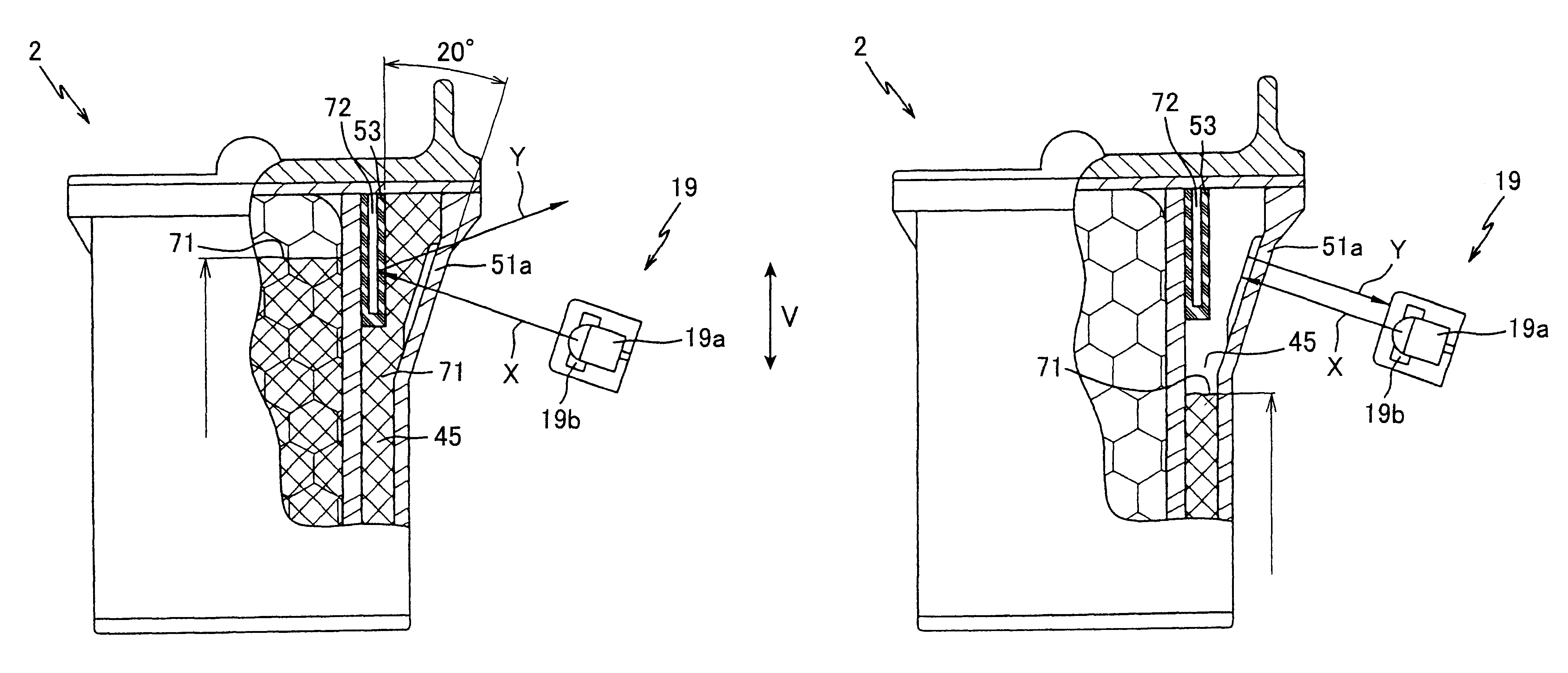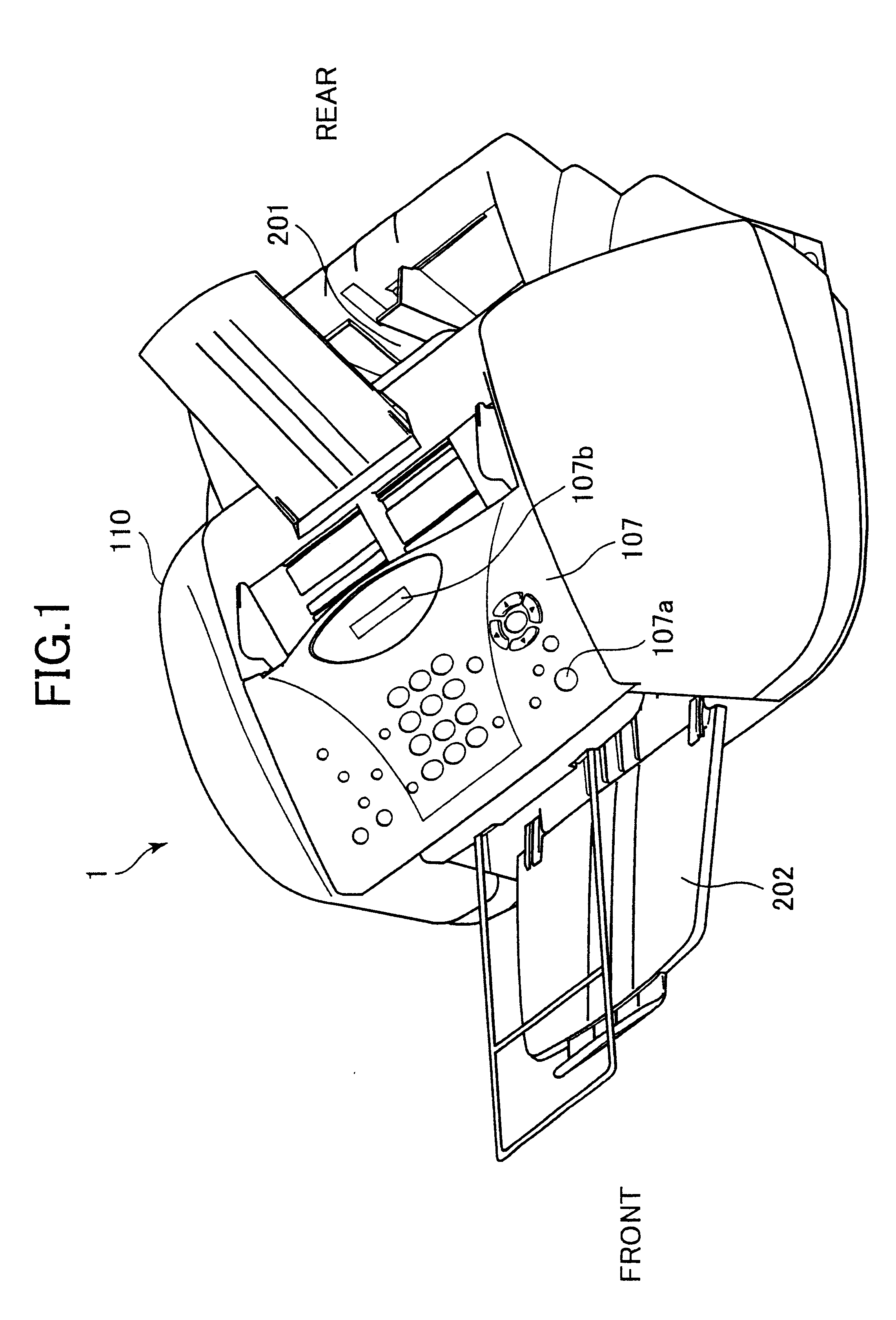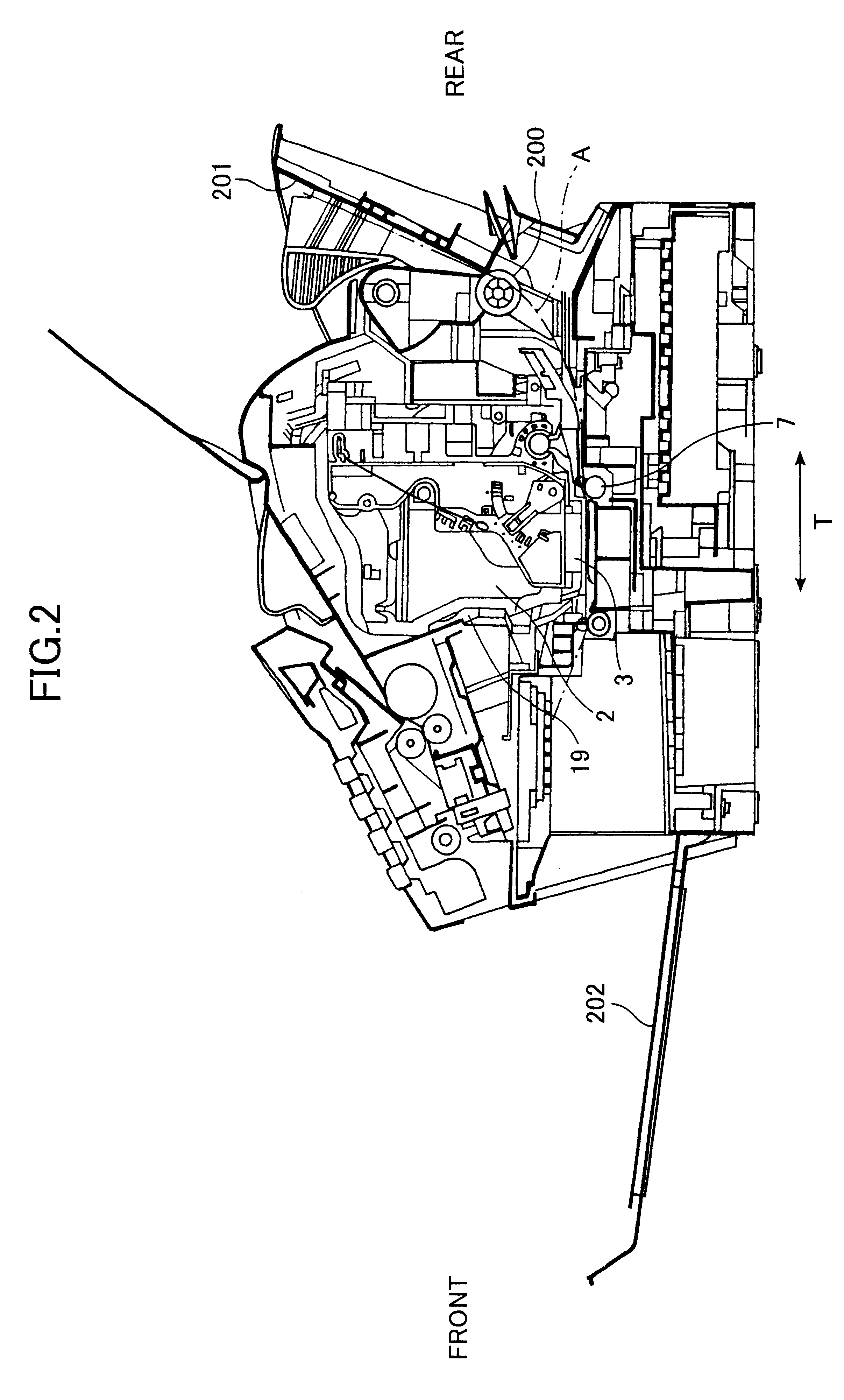Image forming device capable of detecting existence of ink and ink cartridge with high accuracy
a technology of ink and ink cartridges, applied in printing and other directions, can solve the problems of sensor inability to detect, affecting the detection accuracy of ink cartridges, and difficult to slant the optical sensor at the prescribed angl
- Summary
- Abstract
- Description
- Claims
- Application Information
AI Technical Summary
Benefits of technology
Problems solved by technology
Method used
Image
Examples
first embodiment
As described above, according to the present invention, because the level of light emitted from the infrared light-emitting element 19a has been adjusted using the ink cartridge containing yellow ink, the ink sensor 19 can detect remaining ink with great accuracy, even when the ink sensor 19 has irregularities in sensitivity.
Since the amount of light reflected by the yellow ink cartridge is the largest, the present invention can still reliably detect remaining ink in the other ink cartridges when the amount of emitted light is adjusted to achieve proper ink detection in the yellow ink cartridge. Therefore, when the printer uses multiple colors of ink, it is possible to apply a single adjustment value to all ink cartridges, thereby simplifying the process and reducing the processing time.
Moreover, since the level of light emitted from the infrared light-emitting element 19a is adjusted using the yellow ink cartridge 2d containing ink only in the sub ink reservoir 45, a precise adjust...
second embodiment
Next, the present invention will be described with reference to FIGS. 22(a) and 22(b). While the ink cartridge 2 of the first embodiment is configured with the reflecting member 53 to change the optical path of the infrared light, an ink cartridge 130 of the second embodiment includes an infrared light-absorbing member 131 for absorbing infrared light. Parts and components similar to those in the first embodiment are designated by the same reference numerals to avoid duplicating description.
FIGS. 22(a) and 22(b) are side views showing the ink cartridge 130 and the ink sensor 19 with a partial cross-sectional view of the ink cartridge 130. The mounting members and the like for the head unit 4 and ink sensor 19 are omitted from these drawings for illustration purposes.
Similar to the ink cartridge 2 of the first embodiment, the ink cartridge 130 of the present embodiment includes the prisms 52 formed on an inner surface of a sloped portion 51a on which infrared light is irradiated. The...
PUM
 Login to View More
Login to View More Abstract
Description
Claims
Application Information
 Login to View More
Login to View More - R&D
- Intellectual Property
- Life Sciences
- Materials
- Tech Scout
- Unparalleled Data Quality
- Higher Quality Content
- 60% Fewer Hallucinations
Browse by: Latest US Patents, China's latest patents, Technical Efficacy Thesaurus, Application Domain, Technology Topic, Popular Technical Reports.
© 2025 PatSnap. All rights reserved.Legal|Privacy policy|Modern Slavery Act Transparency Statement|Sitemap|About US| Contact US: help@patsnap.com



